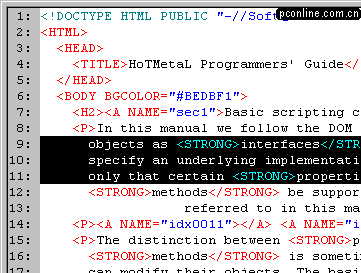struts2数据同步原理
用过struts2的人都知道,struts2有个很大的特点就是可以不再面向Servlet API编程,从Action的方法签名就可以看出,其execut方法不接收任何参数,返回值也仅仅是String.从而实现与Servlet API的解耦,语法层面上脱离了Web容器。当要在Web层即控制器向视图层传递数据时,传统做法都是存储在HttpServletRequest、HttpServletSession、ServletContext对象中。而在struts2中使用其提供的API就可以操作request,session,application这些用于向页面传递数据的对象,这里说的request,session,application是不同于上面所讲的,它们是Map对象,所以才实现与Servlet API的解耦。当然还有parameters对象,还有一个stuts2扩展的attr对象,下面就详细讲解这其中的原理。在讲解之前须要知道ActionContext是如何创建而来的,所以先把这个讲明白:struts2的核心分发器Dispatcher中有两重载的方法:createContextMap,下面是这两个方法的源码:[java]public Map<String,Object> createContextMap(HttpServletRequest request, HttpServletResponse response,ActionMapping mapping, ServletContext context) {// request map wrapping the http request objectsMap requestMap = new RequestMap(request);//将request封装成一个RequestMap对象// parameters map wrapping the http parameters. ActionMapping parameters are now handled and applied separatelyMap params = new HashMap(request.getParameterMap());//将请求参数放在HashMap中// session map wrapping the http sessionMap session = new SessionMap(request);//将session封装在一个SessionMap中(通过request.getSession可获取session)// application map wrapping the ServletContextMap application = new ApplicationMap(context);//把ServeltContext封装在成一个ApplicationMap对象Map<String,Object> extraContext = createContextMap(requestMap, params, session, application, request, response, context);if (mapping != null) {extraContext.put(ServletActionContext.ACTION_MAPPING, mapping);}return extraContext;}[java]public HashMap<String,Object> createContextMap(Map requestMap,Map parameterMap,Map sessionMap,Map applicationMap,HttpServletRequest request,HttpServletResponse response,ServletContext servletContext) {HashMap<String,Object> extraContext = new HashMap<String,Object>();extraContext.put(ActionContext.PARAMETERS, new HashMap(parameterMap));extraContext.put(ActionContext.SESSION, sessionMap);extraContext.put(ActionContext.APPLICATION, applicationMap);Locale locale;if (defaultLocale != null) {locale = LocalizedTextUtil.localeFromString(defaultLocale, request.getLocale());} else {locale = request.getLocale();}extraContext.put(ActionContext.LOCALE, locale);//extraContext.put(ActionContext.DEV_MODE, Boolean.valueOf(devMode));extraContext.put(StrutsStatics.HTTP_REQUEST, request);extraContext.put(StrutsStatics.HTTP_RESPONSE, response);extraContext.put(StrutsStatics.SERVLET_CONTEXT, servletContext);// helpers to get access to request/session/application scopeextraContext.put("request", requestMap);extraContext.put("session", sessionMap);extraContext.put("application", applicationMap);extraContext.put("parameters", parameterMap);AttributeMap attrMap = new AttributeMap(extraContext);extraContext.put("attr", attrMap);return extraContext;}首先要说明的是createContextMap方法返回的Map中的数据就是要放到ActionContext中的数据。第一个createContextMap所做的工作看注释应该都知道了,但有一个细节不知道大家注意到没有,为什么parameters是存放在一个HashMap中,而不是在一个ParametersMap中,当然ParametersMap这个类是不存在的,sturts2开发者没有为请求参数开发一个用于封装请求参数的类,而是直接存放在HashMap中。但是像request,session,application都有对应的封装Map类。这是因为对于请求参数来说在请求到来的时候就已经确定了,不会再变化,而request,session,application这些对象到了Action或者Interceptor中我们会向其添加数据,封装后利于在Action中与Servlet API解耦。第一个createContextMap调用了第二个createContextMap方法,把Servlet原生的与封装好的request,session,application都传了进去,第二个createContextMap方法所做的工作也很简单就是把Servlet原生的与封装好的对象都放在了一个HashMap(extraContext)中,然后返回,注意这个大的HashMap中的所有数据都会放到ActionContext中。还有一个要先讲的就是在struts2中,所使用的request是struts2经过包装的StrutsRequestWrapper类,继承自javax.servlet.http.HttpServletRequestWrapper,并且覆盖了getAttribute方法,下面是该方法源码:[java]public Object getAttribute(String s) {if (s != null && s.startsWith("javax.servlet")) {// don't bother with the standard javax.servlet attributes, we can short-circuit this// see WW-953 and the forums post linked in that issue for more info&n补充:Web开发 , Jsp ,上一个:JSP上传文件到指定位置
下一个:Struts2一个简单的Filter实现
- 更多JS疑问解答:
- 几个验证11位手机号码格式的js代码
- js把图片转换成 base64代码
- js把base代码转换成图片
- JS 将 base64编码的图片转化为图片文件
- js中的定时器
- js如何获得FCKeditor控件的值
- 用js限制投票的cookie .目前设置的为:<input type="" class="" onclick="'window.location...
- JS验证,这块“牛皮”反复修改都不能实现
- 在JS中使用DOM模型
- 如何用JS 获取本地文件夹的文件列表
- js中new 了两个Object数组。怎么样将数组内容合并,重复的内容?
- 求实现自动生成图片缩略图的JS代码
- JS脚本网页问题
- js,代码中"object"和"Object"区别?
- js+flash实现网页图片切换效果,出现边框,单击激活此控件。





